Text

Arduino PLC
The EQSP32 is a comprehensive system encompassing everything from the "Environment End" to the "User End," essential for creating an IoT application. It incorporates interfaces for devices that sense or modify the physical environment, a potent processing unit, and pre-installed software for Wi-Fi connectivity. Additionally, it offers a connection to a real-time database and a tool for building smartphone apps.
Arduino PLC
0 notes
Text
Arduino screw terminals
The EQSP32 is a comprehensive system encompassing everything from the "Environment End" to the "User End," essential for creating an IoT application. It incorporates interfaces for devices that sense or modify the physical environment, a potent processing unit, and pre-installed software for Wi-Fi connectivity. Additionally, it offers a connection to a real-time database and a tool for building smartphone apps.
Arduino screw terminals
0 notes
Text
Investigating the Control of ESP32 and Arduino PLCs with Screw Terminals
Within the domain of mechanical computerization and DIY gadgets, the ESP32 and Arduino stages stand as titans, engaging enthusiasts and experts alike to make imaginative arrangements for a horde of applications. With the appearance of PLCs (Programmable Rationale Controllers), these stages have risen above conventional boundaries, advertising unparalleled adaptability and usefulness. Among the numerous highlights that lift their utility, the joining of screw terminals into ESP32 and Arduino PLCs has risen as a game-changer, streamlining the network and upgrading flexibility in different ventures.
ESP32 PLCs, fuelled by the flexible ESP32 microcontroller, have picked up colossal ubiquity due to their vigorous execution and broad capabilities. So also, Arduino PLCs, built upon the famous Arduino stage, have cemented their position as go-to arrangements for mechanisation assignments and prototyping endeavours. What sets these PLCs separated is their integration of screw terminals, encouraging secure and helpful wiring in mechanical and DIY ventures alike.
Screw terminals serve as a principal interface between electronic components and outside gadgets, enabling reliable associations without patching or complex wiring methods. Within the setting of ESP32 screw terminals and Arduino screw terminals, the consideration of screw terminals altogether upgrades availability and ease of utilisation, catering to a different run of users, from prepared engineers to amateur devotees.
The utilisation of screw terminals in ESP32 and Arduino PLCs offers a few key advantages:
Helpful Network:
Screw terminals dispense with the requirement for patching or pleating wires, disentangling the method of interfacing sensors, actuators, and other fringe gadgets to the PLCs. This comfort quickens prototyping and investigating, permitting clients to centre on the centre usefulness of their ventures.
Secure Associations:
With screw terminals, clients can accomplish secure and dependable associations, minimising the chance of free wires or irregular contacts. This guarantees vigorous execution indeed in requesting mechanical situations where solidness and consistency are vital.
Adaptability and Measured quality:
The secluded nature of screw terminals empowers clients to effortlessly include or evacuate components from their setups without complex wiring methods. This adaptability cultivates quick cycle and customization, engaging clients to adjust their ventures to advancing necessities with negligible exertion.
Compatibility and Interoperability:
ESP32 and Arduino PLCs with screw terminals follow industry-standard stick arrangements, advancing compatibility with a tremendous cluster of sensors, actuators, and communication modules available in the showcase. This interoperability empowers consistent integration with existing equipment biological systems, opening entryways to boundless conceivable outcomes in robotization and IoT applications.
Whether it's checking natural parameters, controlling mechanical apparatus, or making intelligent establishments, ESP32 and Arduino PLCs with screw terminals offer unparalleled flexibility and execution. From specialists tinkering in their workshops to experts creating cutting-edge arrangements, these stages serve as catalysts for advancement and investigation within the domain of gadgets and computerization.
In conclusion, the integration of screw terminals into ESP32 and Arduino PLCs represents a critical progression within the field of mechanical mechanisation and DIY gadgets. By combining the control and adaptability of these stages with the comfort and unwavering quality of screw terminals, clients can unleash their inventiveness and bring their thoughts to life with unparalleled ease and productivity. As innovation proceeds to advance, ESP32 and Arduino PLCs with screw terminals will without a doubt stay at the cutting edge of development, driving advances and enabling people and businesses worldwide.
0 notes
Text
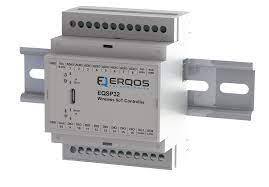
Bluetooth PLC
The EQSP32 is a comprehensive system encompassing everything from the "Environment End" to the "User End," essential for creating an IoT application. It incorporates interfaces for devices that sense or modify the physical environment, a potent processing unit, and pre-installed software for Wi-Fi connectivity. Additionally, it offers a connection to a real-time database and a tool for building smartphone apps.
Bluetooth PLC
0 notes
Text
Arduino DIN
The EQSP32 is a comprehensive system encompassing everything from the "Environment End" to the "User End," essential for creating an IoT application. It incorporates interfaces for devices that sense or modify the physical environment, a potent processing unit, and pre-installed software for Wi-Fi connectivity. Additionally, it offers a connection to a real-time database and a tool for building smartphone apps.
Arduino DIN
0 notes
Text
Bluetooth PLC
The EQSP32 is a comprehensive system encompassing everything from the "Environment End" to the "User End," essential for creating an IoT application. It incorporates interfaces for devices that sense or modify the physical environment, a potent processing unit, and pre-installed software for Wi-Fi connectivity. Additionally, it offers a connection to a real-time database and a tool for building smartphone apps.
Bluetooth PLC
0 notes
Text
Investigating the Flexibility of ESP32 Commotion and Arduino Clamour for WIFI and Bluetooth PLC Applications
Within the ever-evolving scene of mechanical mechanisation, the request for flexible and productive arrangements proceeds to rise. Among the heap of advances accessible, ESP32 Commotion and Arduino Noise stages have developed as capable contenders, advertising consistent integration, strong usefulness, and unparalleled adaptability. With the coming of WIFI and Bluetooth capabilities, these stages have ended up as irreplaceable components in cutting edge Programmable Rationale Controllers (PLCs), revolutionising the way businesses work.
ESP32 DIN and Arduino DIN speak to a modern era of PLCs that use the control of remote communication conventions such as WiFi and Bluetooth. These stages serve as the spine for building shrewd, associated frameworks that streamline forms, improve efficiency, and optimise asset utilisation over assorted mechanical segments.
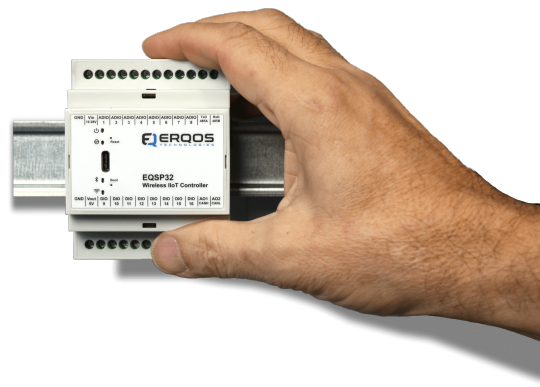
The ESP32 Noise, fuelled by the ESP32 microcontroller, is eminent for its remarkable execution, moo control utilisation, and broad network alternatives. Prepared with built-in WiFi and Bluetooth modules, the ESP32 Commotion offers consistent integration with existing systems and peripherals, making it a perfect choice for IoT (Web of Things) applications and mechanical computerization ventures.
Additionally, Arduino Clamour stages, built upon the well-known Arduino environment, give a recognizable and user-friendly advancement environment for engineers and enthusiasts alike. With bolster for WiFi and Bluetooth communication modules, Arduino Commotion sheets engage clients to make custom PLC arrangements custom-made to particular industry prerequisites.
The integration of WiFi PLC and Bluetooth PLC opens up a heap of conceivable outcomes for inaccessible checking, information procurement, and control in mechanical situations. WiFi network empowers real-time communication between PLCs and central servers, encouraging information trade, farther diagnostics, and prescient support procedures.
Bluetooth usefulness, on the other hand, empowers consistent communication between PLCs and portable gadgets, permitting administrators to screen and control mechanical forms from a place inside the office. Whether it's arranging parameters, upgrading firmware, or investigating issues, Bluetooth-enabled PLCs offer unparalleled comfort and openness.
In expansion to remote communication, ESP32 Noise and Arduino Noise stages boast a wealthy array of highlights custom fitted to the wants of mechanical applications. From vigorous industrial-grade development to flexible I/O interfacing, these stages offer the unwavering quality and versatility required to handle complex robotization challenges.
The measured nature of ESP32 Clamour and Arduino Noise stages permits for simple extension and customization, empowering clients to coordinate extra sensors, actuators, and communication modules to suit particular application prerequisites. Whether it's meddled with bequest hardware or consolidating progressed detecting innovations, these stages give the flexibility to adjust and advance with changing industry requests.
Moreover, the open-source nature of ESP32 Clamour and Arduino Clamour stages cultivates collaboration and advancement inside the mechanical computerization community. Designers and engineers can use a wealth of assets, libraries, and community-driven ventures to quicken improvement cycles and bring cutting-edge arrangements to advertise quicker than ever recently.
In conclusion, the meeting of ESP32 Commotion and Arduino Commotion stages with WiFi and Bluetooth innovation speaks to a worldview move within the domain of mechanical robotization. By combining the control of remote communication with the flexibility of PLCs, these stages engage businesses to grasp the period of Industry 4.0 and open unused levels of productivity, efficiency, and competitiveness in today's energetic commercial centre.
0 notes
Text
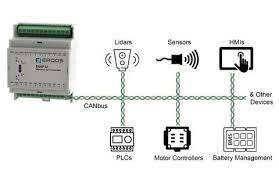
Arduino DIN
The EQSP32 is a comprehensive system encompassing everything from the "Environment End" to the "User End," essential for creating an IoT application. It incorporates interfaces for devices that sense or modify the physical environment, a potent processing unit, and pre-installed software for Wi-Fi connectivity. Additionally, it offers a connection to a real-time database and a tool for building smartphone apps.
Arduino DIN
0 notes
Text
Arduino PLC
The EQSP32 is a comprehensive system encompassing everything from the "Environment End" to the "User End," essential for creating an IoT application. It incorporates interfaces for devices that sense or modify the physical environment, a potent processing unit, and pre-installed software for Wi-Fi connectivity. Additionally, it offers a connection to a real-time database and a tool for building smartphone apps.
Arduino PLC
0 notes
Text
Arduino screw terminals
The EQSP32 is a comprehensive system encompassing everything from the "Environment End" to the "User End," essential for creating an IoT application. It incorporates interfaces for devices that sense or modify the physical environment, a potent processing unit, and pre-installed software for Wi-Fi connectivity. Additionally, it offers a connection to a real-time database and a tool for building smartphone apps.
Arduino screw terminals
0 notes
Text
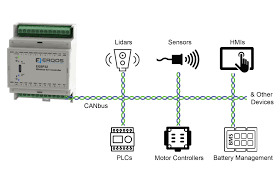
Arduino screw terminals
The EQSP32 is a comprehensive system encompassing everything from the "Environment End" to the "User End," essential for creating an IoT application. It incorporates interfaces for devices that sense or modify the physical environment, a potent processing unit, and pre-installed software for Wi-Fi connectivity. Additionally, it offers a connection to a real-time database and a tool for building smartphone apps.
Arduino screw terminals
0 notes
Text
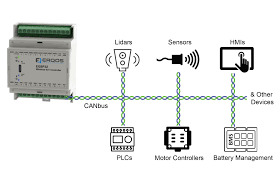
Arduino screw terminals
The EQSP32 is a comprehensive system encompassing everything from the "Environment End" to the "User End," essential for creating an IoT application. It incorporates interfaces for devices that sense or modify the physical environment, a potent processing unit, and pre-installed software for Wi-Fi connectivity. Additionally, it offers a connection to a real-time database and a tool for building smartphone apps.
Arduino screw terminals
0 notes
Text
Arduino DIN
The EQSP32 is a comprehensive system encompassing everything from the "Environment End" to the "User End," essential for creating an IoT application. It incorporates interfaces for devices that sense or modify the physical environment, a potent processing unit, and pre-installed software for Wi-Fi connectivity. Additionally, it offers a connection to a real-time database and a tool for building smartphone apps.
Arduino DIN
0 notes
Text
5 Key Differences Between ESP32 PLC and Arduino PLC Systems
To enable programming control that is used to automate and control the behavior of electronic devices and processes, we have the Programmable Logic Controllers (PLCs). There are certain differences between them in terms of capability and application, although ESP32 and arduino boards can be programmed as PLCs.
This article will highlight 5 major differences between ESP32 PLC and Arduino PLC systems pertaining to connectivity, I/O interfaces, processing power, programming complexity, and industrial suitability. Identifying these contrasting features will help you determine which platform better matches your specific project requirements.
1. Processing Power and Speed
Compared to the Arduino PLC, the ESP32 PLC accelerates a great deal of power and pace. The interesting fact about ESP32 is that it has a dual-core processor, capable of working up to 240 MHz, while the basic Arduino processors are single-core and clocked at 16 MHz. The disparity in processing powers implies that the ESP32 can deal with progressively complex undertakings, gather and process information quicker, and bolster more gadgets at a go. It is perfect for use in systems that need on-the-go data operation like advanced substantially automation connections arrangements or industrial monitoring structures.
2. Connectivity Options
Regarding connectivity, the ESP32 undeniably stands out due to the integrated WiFi PLC and Bluetooth PLC modules. This makes it simple to implement within IoT (Internet of Things) projects and can be controlled from a distance, with data acquisition not requiring any additional modules.
Conversely to, Arduino PLC systems can be enabled with WiFi and Bluetooth functionality however, this often comes in the form of additional shields or modules that need to be introduced. This complicates not only your projects but also your setup's total cost and footprint.
3. Power Consumption
Another important aspect is that of power consumption. The main selling point of the ESP32 PLC is the built-in power-saving mechanisms, as it features a variety of sleep stages and power domains that enable the microcontroller’s built-in power management system to put the SoC into the REST sleep mode when the processor is not undertaking demanding operations. This makes it perfect for applications that normally use power from batteries or portable applications. On the other hand, Arduino PLC systems are not known for power consumption, but neither do they come with the exciting power management features of ESP32 that might result in limited battery life in cases where power conservation is important.
4. Industrial Suitability
Rugged form factors like DIN rail mounts along with screw terminal connections, make industrial-grade Arduino PLCs suitable for harsh plant environments. ESP32 lacks the protective casings and screw-type terminals commonly demanded in industrial settings.
5. I/O Interfaces
The available input/output pins are generally higher on standard Arduino boards than ESP32 dev boards. Expanding I/O ports on ESP32 requires additional multiplexer circuits. However, industrial ESP32 PLCs come integrated with sizeable I/O terminals comparable to that of Arduino PLCs.
Conclusion
To summarize, while Wi-Fi/BT connectivity, processing performance and I/O expandability favors ESP32 PLC, ease of programming and out-of-the-box industrial compatibility gives Arduino PLC an edge. Get the best of both worlds with hybrid ESP32-Arduino PLC solutions! Visit https://erqos.com/ for all your PLC and automation parts.
0 notes
Text
Bluetooth PLC
The EQSP32 is a comprehensive system encompassing everything from the "Environment End" to the "User End," essential for creating an IoT application. It incorporates interfaces for devices that sense or modify the physical environment, a potent processing unit, and pre-installed software for Wi-Fi connectivity. Additionally, it offers a connection to a real-time database and a tool for building smartphone apps.
Bluetooth PLC
0 notes
Text
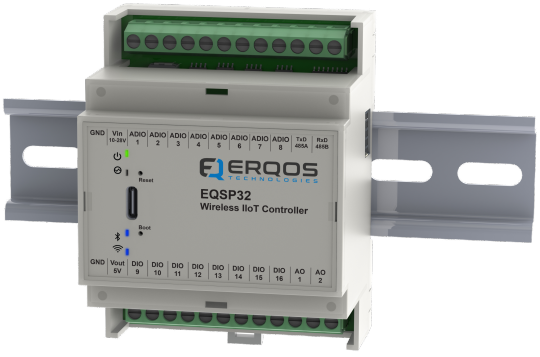
Arduino PLC
The EQSP32 is a comprehensive system encompassing everything from the "Environment End" to the "User End," essential for creating an IoT application. It incorporates interfaces for devices that sense or modify the physical environment, a potent processing unit, and pre-installed software for Wi-Fi connectivity. Additionally, it offers a connection to a real-time database and a tool for building smartphone apps.
Arduino PLC
0 notes
Text
How to Choose the Best Arduino Screw Terminals for Your Projects
There are different options of screw terminals for Arduino screw terminals, and by selecting the most appropriate screw terminals, you do work with wiring and connecting the components way simpler. Connectivity can be realized easily and quickly through the use of screw terminals, which eliminate the need to solder wires. The screw terminal options you get on the Arduino boards in the market are so many and it is sometimes difficult to choose those that are considered best depending on your needs.
The following blog post will take you through the critical elements to have in mind when deciding to purchase Arduino screw terminals so that you pick the most versatile and long-lasting products for all your DIY electronics projects. No matter what kind you are interested in procuring, whether it is for simple prototyping or for use in a more industrial-type setting, using these tips will make the purchase process much easier and will also ensure that you receive exactly what you want.
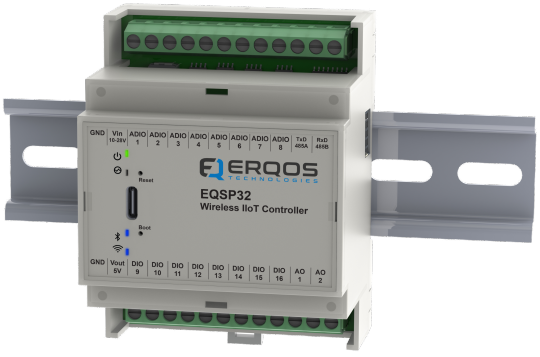
Durability
Because you will not want to change scrw terminals very often, go for these made of tough materials, for example, nylon plastic which is resilient to wear and tear. Metal threaded inserts for securing wires also add more strength and longevity compared to plain plastic screws.
For heavy-duty applications with higher voltages or currents, using Arduino screw terminals rated for the required loads will prevent meltdowns. opt for UL-rated industrial ones with casings that can handle exposure to extreme temperatures or environments.
Ease of Installation and Use
For hobbyists and professionals alike, the ease of installation and use is a key consideration. Look for Arduino screw terminals that offer features like:
Color coding for easy identification of connections.
Labels or markings that allow you to note down connection points.
A design that accommodates different wire sizes without the need for additional tools.
These small conveniences can greatly enhance the speed and efficiency of your project assembly and maintenance.
Compact Design
When working with Arduino prototype boards or packing numerous components into an enclosure, compact screw terminal blocks help optimize available space. Look for miniaturized models like 2-pole or 4-pole ones that occupy less area while still allowing sufficient wiring room.
Low profile terminals like the plug-in block types are ideal if you need to stack multiple layers of connections. Slim vertical or horizontal screw terminals also have small footprints perfect for Arduino projects with size constraints.
Compatibility with Your Board
The identification of the compatibility of the screw terminals with the Arduino board is often the first thing to do. Bear in mind that not all terminals are to fit this very board so one has to look for the terminals created explicitly for the given Arduino model. Whether you are working on introducing Arduino DIN rail project, or are rather incorporating Arduino into the larger WiFi PLC system, making sure it fits perfectly will spare you a lot of unpleasant surprises in the future.
Terminal Block Types
Arduino screw terminals come in a variety of connector styles to suit the enclosures and layouts of your projects:
PCB Mount – As the name suggests, these have pins for securely fastening onto PCBs.
Panel Mount – These terminal blocks can be mounted on enclosure walls. They have a flange/frame for screw-fixing onto flat surfaces.
DIN Rail Mount – Designed to snap conveniently onto DIN rails widely used in industrial electronics.
Free-Hanging – No mounting hardware required. You can use them loose by just connecting wires.
Conclusion
Choosing the best Arduino screw terminals gets easy once you evaluate options based on ease of use, durability, size constraints, and terminal block types. erqos offers an extensive range of terminal connectors to suit diverse budgets and project needs. Visit https://erqos.com/ to find the ideal ones to organize and streamline your next Arduino project!
1 note
·
View note